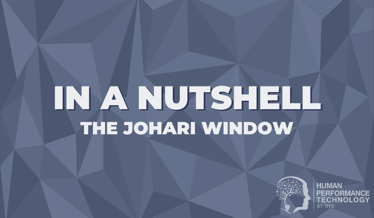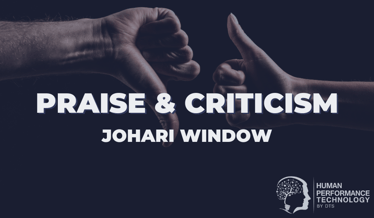Praise & Criticism: The 5 Dysfunctions of a Team
"The Five Dysfunctions of a Team: A Leadership Fable" (2002) is a bestselling business book written by Patrick Lencioni in the form of a parable (a narrative with fictional characters used to convey its main points).This article is an extension to our "In a Nutshell" series. To read our original overview of the Five Dysfunctions of a Team model, click here.
Praise
The five dysfunctions model is considered by many HR professionals to be the best framework for team building. While Five Dysfunctions (2005) is the main text used to introduce the model, there are additional support materials that have been developed for practical application including, Overcoming the Five Dysfunctions of a Team: A Field Guide for Leaders, Managers, and Facilitators (2005). The time and effort that has been invested in making the model clear, simple, and easy to apply to a business context are among its chief assets.
The fictional case study used by Lencioni to introduce the model is viewed by some as a useful literary device for revealing one dysfunction at a time in a logical sequence. It also helps to give the model context and makes it easier to relate to people working in a modern-day business environment. The personalities of some of the characters in the executive team are common stereotypes that will be familiar to many, and the team’s challenges are general enough to relate to one’s own workplace.
Lencioni’s model has something to offer just about any team—most especially team leaders. Leaders may desire to go through all of the principles and associated ideas with their teams and complete the team assessment on page 191, or they simply draw on the principles for their own personal development. Either way, Lencioni provides a very clear guide for leaders with plenty of tips, guidelines, resources and action steps to help apply the model immediately.
Another strength of Lencioni’s model is its ability to integrate with other models. Because the five dysfunctions are broad principles, this gives them the flexibility to be easily connected to other tools, ideas and principles. Lencioni explicitly recommends the MBTI and ‘behavioural preference profiles’ (i.e., DISC). Covey’s 7 Habits, Johari Window, Emotional Intelligence, Active Listening, and the Six Thinking Hats all have clear uses within the framework (particularly for addressing the first 3 dysfunctions).
Lencioni’s model can also be directly linked to Forming-Storming-Norming-Performing. While Lencioni’s five dysfunctions are not about the key stages of team development, they are about the key obstacles that prevent teams from reaching the Performing stage. Dysfunction #1 has the most relevance to the Forming stage, while each subsequent dysfunction is probably most relevant to the Storming and Norming stages. Both models are complementary. Insights from each can be blended together to help teams reach the Performing stage quickly and with minimal fuss.
Criticism
The main criticism of the five dysfunctions model is its lack of empirical support, since it stems directly from Lencioni’s personal experience. Due to the fictional fable device, Lencioni avoids the elements that are common to credible business books: third-party references, quotes, links to experiments, case studies, and a range of qualitative and quantitative evidence that could be used to lend weight to his claims (e.g., Good to Great).
By the very nature of utilising a fable with a single narrative, Lencioni is able to avoid drawing on a diversity of other case scenarios where the model may have been used (e.g., The Leadership Challenge). As far as the reader can tell, the model may only have been field-tested in one setting where the results were favourable. However, due to a lack of reporting of any field-testing, the reader may be unaware of challenges when applied to settings in which Lencioni has less experience or in which Lencioni has not considered how other facilitators (besides himself) would apply the model. Moreover, the fable structure allows the author to smooth out bumps in the team building process, simplify problems, exaggerate results, and generally fit the events to suit the description of the model rather than examine the results from real-world scenarios.
Due to its design as a practical team building framework made up of guiding principles, scientific data is not necessarily essential to the model’s credibility; however, this does leave the model open to several vulnerabilities. First, the lack of evidence raises questions about how HR professionals and executives wanting to undertake team development would gain buy in from others in their organisation. They are essentially making the proposition: ‘Because the framework sounds good’. Second, the lack of evidence fails to support how it is a better choice than other team building models. For example, in relation to trust, Lencioni’s core emphasis is placed on vulnerability, being open and honest. In The Speed of Trust (2006), Stephen M. R. Covey presents a much more detailed picture of trust, including 13 specific behaviours, divided across 2 categories: competence and character, lending equal weight to both elements. Lencioni, it could be argued, oversimplified the dynamics of trust by placing his focus on one particular element.
Lencioni even advocates sharing personal information in order to reveal vulnerability and build a foundation of trust. In practice; however, this can be risky. As discussed in the analysis of the Johari Window exercise, sharing too much sensitive information can influence others’ perceptions of competence in a negative way.
The third issue associated with the credibility of the five dysfunctions model relates to the numerous unsupported claims made by its author. For example, Lencioni is clear that trust is the foundation of team effectiveness; however, there are other external, organisational and systemic factors that may have a far more significant impact on performance beyond the quality of interpersonal relationships within a team. This is also discussed in the critique of Forming-Storming-Norming-Performing. For example, airline crews have a clear external structure built around them that facilitates performance without being dependent on vulnerability-based trust. The impact of external factors on the development of a team’s effectiveness is not sufficiently dealt with by Lencioni in his model.
Further to the issue of inadequate empirical support, Lencioni strongly emphasises that all five dysfunctions are interrelated and that it would be a mistake to address any one in isolation. He states: ‘And so, like a chain with just one link broken, teamwork deteriorates if even a single dysfunction is allowed to flourish’. How is Lencioni able to justify such a substantial statement without any objective, experimental data?
Because the model is hierarchical in nature and theoretically connected at each step, the model relies on the reader to accept that each dysfunction is: (1) roughly of equal importance as the next and; (2) connected, so that each step affects the next. As a conceptual framework, this is perhaps its biggest structural weakness: if either premise fails, the credibility of the model is seriously damaged. In reality, it may be that Lencioni’s model has one important dysfunction and four not-so-important dysfunctions. The model gives the distinct impression that each dysfunction is of equal weight. The burden of proof is placed on Lencioni to support the model with non-anecdotal evidence. This of course, is a problem. Terms like ‘trust’, ‘conflict’, ‘commitment’, ‘accountability’, and ‘results’ are vague enough to be interpreted as one likes, making it difficult to measure and determine how useful the model is in reality. The model is thus prone to the Barnum effect (the principle that people are able to find meaning in vague descriptions that could easily be interpreted in many other ways).

Theo Winter
Client Services Manager, Writer & Researcher. Theo is one of the youngest professionals in the world to earn an accreditation in TTI Success Insight's suite of psychometric assessments. For more than a decade, he worked with hundreds of HR, L&D and OD professionals and consultants to improve engagement, performance and emotional intelligence of leaders and their teams. He authored the book "40 Must-Know Business Models for People Leaders."



We Would Like to Hear From You (2 Comments)